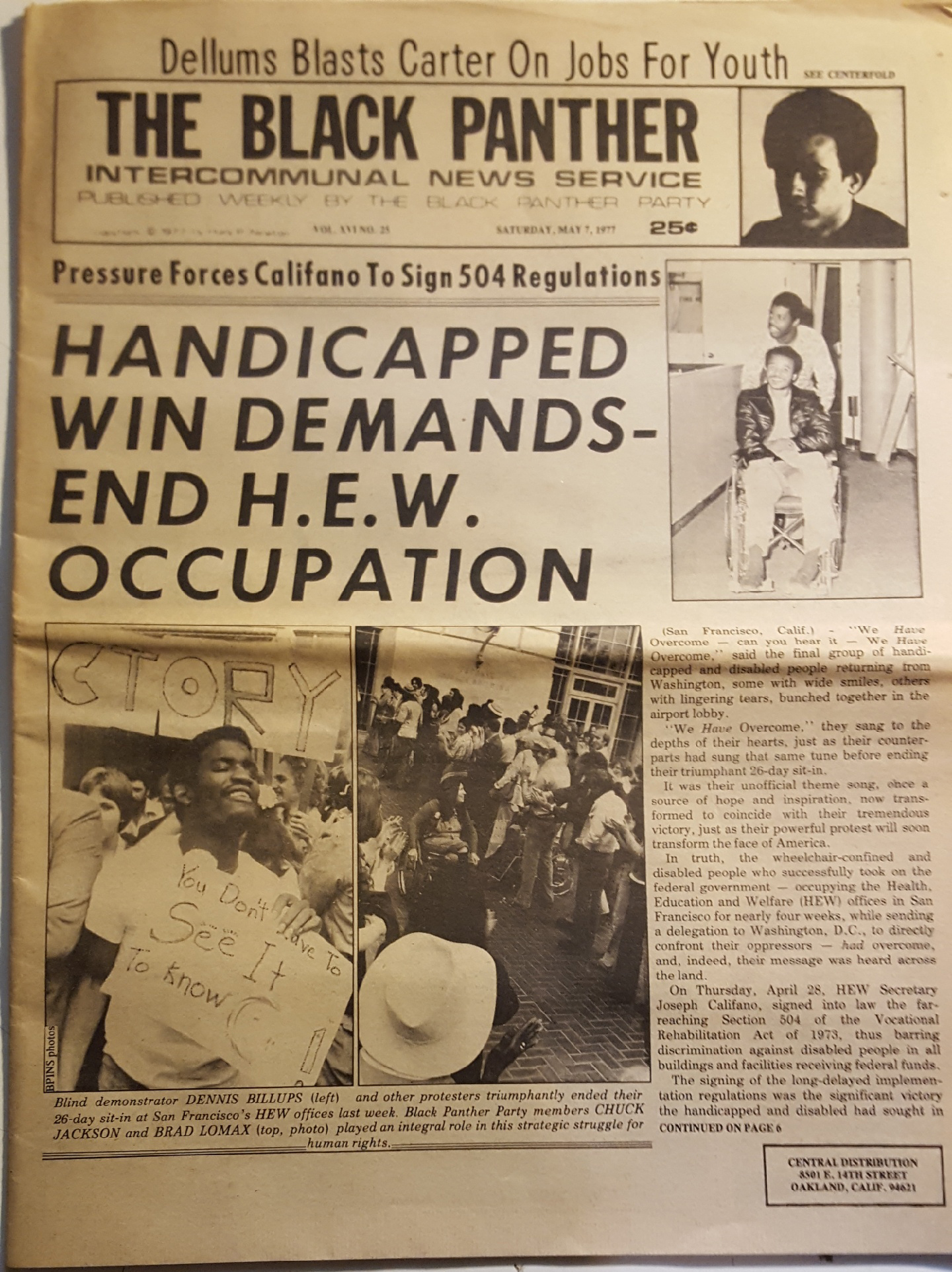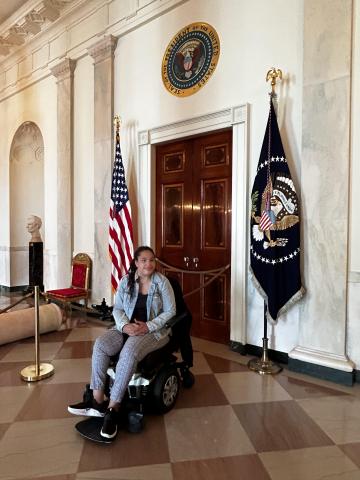Brad Lomax: The Disabled Black Panther Who Fought for Section 504
By Saphire Murphy
Brad Lomax is a disabled man who is the leading reason we have Section 504 of the Americans with Disabilities Act, but most likely, you don’t know who he is. You don’t have to be embarrassed or ashamed because not many people know of Lomax and his contributions to Disability Rights.
I shaped my research around wanting to understand the untold stories of Black Disabled People. The Disabled Community understood who the White Leaders of Disability History were, names like Judy Heumann or Ed Roberts, but not many know the untold leaders. I realized the disabled community's lack of understanding of intersectionality. I approached my local Center of Independent Living, as this is their history. They allowed me to create the type of lesson I wanted, which was more educational and presentation-based. I began by discussing his beginning as a member of a family of civil rights activists to creating his name in advocacy.
For my whole master’s program, I researched the Disabled Leader, Brad Lomax, who was an activist in his own right before he was disabled in his 20s with multiple sclerosis, better known as MS. He made a smooth transition from a civil rights activist to a disability rights activist. Many of the readers may wonder how? Brad Lomax was the one who was the first to see and experience, but not be able to point out the intersectionality between disabled people and black people. He points out how they have shared identities and oppressors, the example commonly used but not always explained is how “separate but equal” was just a saying to the white disabled movement.
Brad Lomax experienced racial ableism when he arrived from Philadelphia to Oakland, California. He saw that the movement didn’t include black disabled people, even though the disabled rights movement began with the idea of “Separate but Equal” from the civil rights movement. So, he did something about it. First, He created his own Center of Independent Living in the more run-down city of Oakland instead of just having Berkley as an option. He gave guidance and helped people navigate being disabled at a time when it was not acceptable. Over time, he realized he needed to be a part of the Disability Rights Movement, so he got involved. Lomax joined Heumann in the sit-in, and if you ask me, he’s the reason the movement made it. Heumann didn’t think the plan through for the sit-in with disabled people. She just wanted to make a statement and kept asking people to stay one more day without a solution at the end, then Lomax showed up and made some calls to the Black Panthers, of which he was a member.
The Black Panthers had an incredible role in the Disability Rights Movement, the Section 504 Sit-in. At first, it was thought that they just provided food for disabled protesters, but they did more than that. The Black Panthers and Lomax helped spread the word about what was happening in the Health, Education and Welfare office and detailed the reason why disability issues were issues everyone should care about. They say there are social justice issues with the disabled community. If you ask me as a disabled person, Lomax should have been the bridge of this movement to bring a voice to more marginalized disabled people.
The history of Brad Lomax raises questions about present-day issues like intersectionality and the issues surrounding Section 504. One attendee at my Center of Independent Living presentation asked me how we can increase inclusion with modern-day movements. I won’t lie, the question caught me off guard, not because I didn’t think it would be asked–I hoped it would. But because I still don’t know how to answer that question. In February... I answered, "Don’t let people forget we are here," but now that I had time to think about it, I think the answer can be different. We need to create an understanding of how issues affect disabled people. Creating an understanding of how issues affect disabled people helps create a conversation around the importance of inclusion with disabled people and discuss the accommodations needed for inclusion. The reason people don’t include people with disabilities is that able-bodied people are not taught about people with disabilities in education, or are seen as members of society who face a level of discrimination when they share multiple identities.
In the beginning, I said I did this to create understanding for intersectionality in the disability community. Still, I realized at the end that I did it for questions like that. To show why there needs to be conversations about people with disabilities in history, literature, health, and creating ASL as a language requirement. Opening conversations make people think about the challenges people with disabilities face and the importance of having engaging and inclusive discussions.
Further Resources on Brad Lomax and the Disability Rights Movement
- The 504 Protests and the Black Panther Party - Disability Social History Project.
- Brad Lomax: Creating Communities of Care - PBS Renegades series.
- How Activists Create Change - Lesson plan by teacher Wendy Harris.
Saphire Murphy, Consulting Scholar on Disability and Disability History
Saphire Murphy, a Sociology and Education Inclusion Intern, is a community educator and scholar focused on disability representation. She is a graduate student at the University of Toledo in Ohio, pursuing dual degrees in Sociology and a Master’s in Liberal Studies. Her aspiration is to enhance her education by obtaining a graduate certificate in Qualitative Research and eventually enrolling in a PhD program in Sociology. Saphire earned her bachelor’s degree in Sociology with dual minors in Disability Studies and Women’s Studies. She applied her research during a summer internship in 2023 with the American Association for People with Disabilities (AAPD) and participated in the Fannie Lou Hamer Fellowship Program in the fall of the same year. Saphire witnessed firsthand the repercussions of not integrating disability history into the general curriculum, recalling the complaints voiced by teachers when she conducted her research and questioned why it is not included. She hopes to merge her passion for sociology and education, stressing the importance of uplifting disabled individuals who see the potential for change when social studies and history embrace inclusivity, rather than perpetuating the narrative that disabled people are only present in the traumatic aspects of history.





